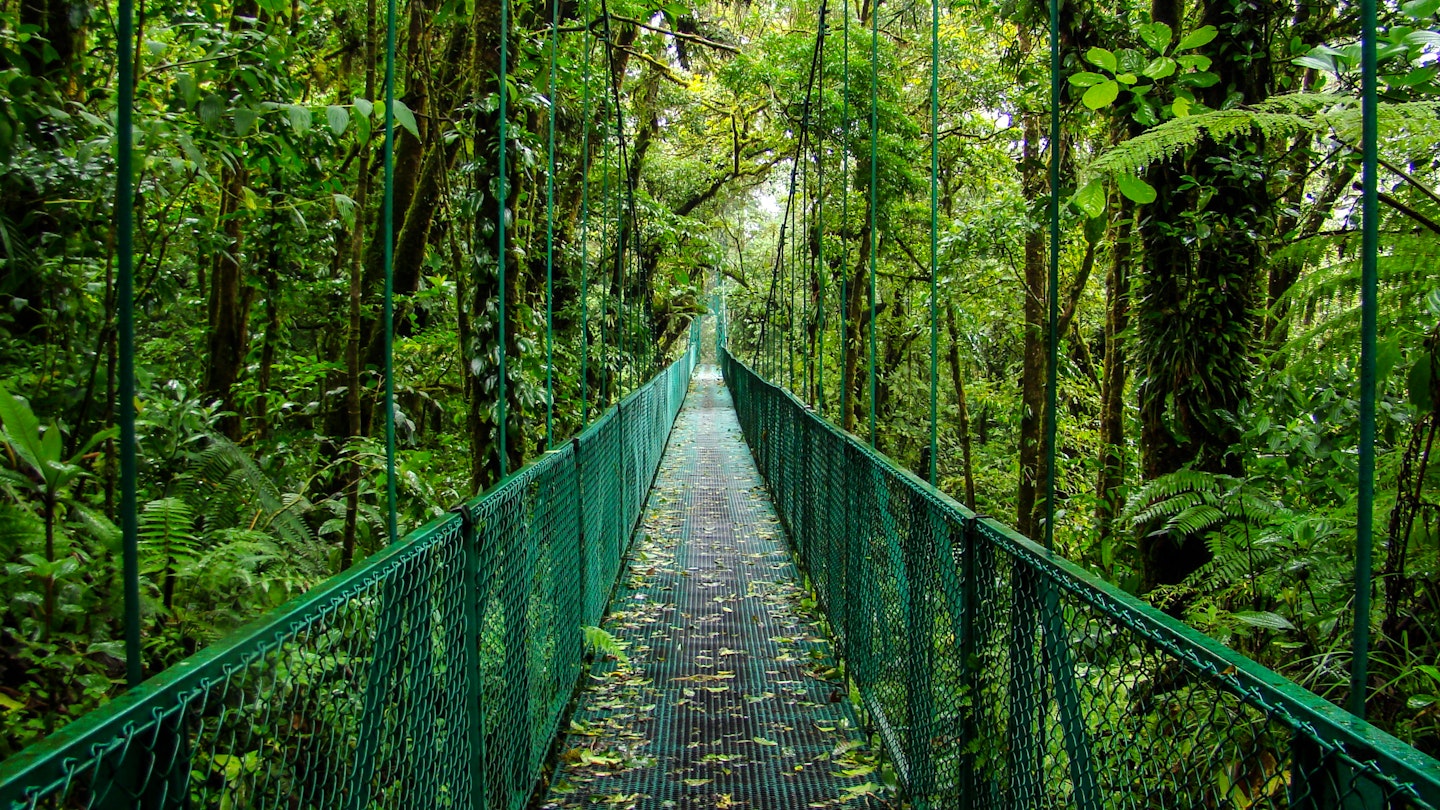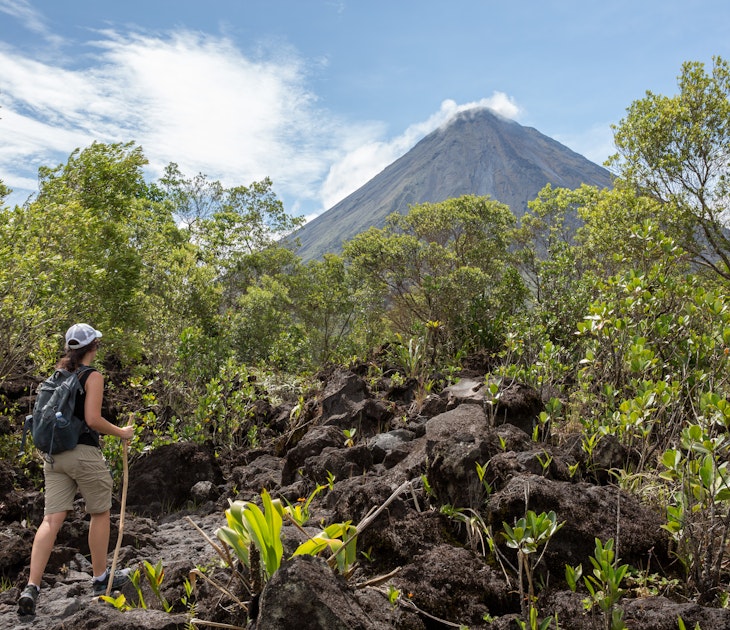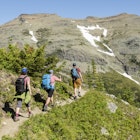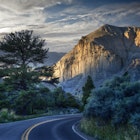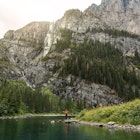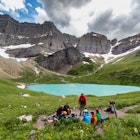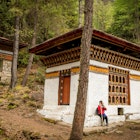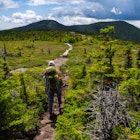Soon after Costa Rica reopened to US tourists, Ali Wunderman visited to talk to the locals, learn the pandemic protocols and seek out a very elusive bird.
Twenty-one years ago, Costa Rica was the first country I had ever visited outside the United States. Since that first trip, I have been returning as a travel journalist and aficionado of the country. Arenal Volcano may not be spewing lava anymore like when I first visited, but I was still determined to come back after the borders reopened to tourists amid the coronavirus pandemic.
Being from Montana, I was just about last on the list of Americans that Costa Rica wanted to take in, thanks to a summertime spike in COVID-19 rates. In August, Costa Rica announced it would begin accepting tourists from well-behaved states in New England as soon as September, as long as they were willing to provide a negative coronavirus test result.
But by October, Costa Rica announced it would not only welcome all United States residents beginning November 1; no one would need to prove they were free of the disease.

Booking my trip
As a United Airlines status holder, it made the most sense for me to stick with my airline so I could take advantage of their upgraded support phone line, should I need it. The roundtrip flight cost about $500 USD, and that price looks stable. Most commercial carriers have brought back their Costa Rica routes, though more are trickling in through the next few months.
In order to enter Costa Rica, it's mandatory to purchase health insurance that covers COVID prior to the trip. It’s easier to go through a Costa Rican provider like National Insurance Institute (INS) or Sagicor. To guarantee coverage for COVID-related illnesses up to $50,000 USD and lodging expenses up to $2,000 USD, it cost me $267 USD for a week-long trip. Filling out a health form is also required prior to boarding for Costa Rica.
While proof of a negative COVID-19 test is no longer required to enter the country, this decision came largely in response to American unwillingness to get tested. So, for my peace of mind, knowing I was doing everything I could to not spread the disease while still contributing to Costa Rica’s struggling economy and mental health crisis, I elected to take an easy test which cost $200. With cases rising in my state, I also chose to quarantine for six weeks prior to my trip, just to be sure.
I was frankly hesitant about traveling abroad at all, but after discussing a potential trip with locals in Costa Rica suffering from the sudden disappearance of income, it was clear that my desire to travel couldn’t begin to compare with their desire to get travelers back to their country.

Costa Rica and the pandemic
There is a joke going around Costa Rica that thanks to all the hand washing, they can see the notes they wrote on their palms in 1st grade. The already-fastidious people of Costa Rica had no problem standardizing upgraded health protocols, including near-ubiquitous masking up, but beyond having a good sense of humor about things, they are inarguably struggling with the consequences of the pandemic.
Not so much when it comes to physical health. As of November 18, Costa Rica has had a total of 126,000 confirmed cases of COVID-19 since March 2 with 1578 deaths recorded. Given that the US is experiencing Costa Rica’s total number of cases over eight months on a daily basis, I certainly felt more at ease with the idea of being there.
But in researching this trip and speaking with friends born and raised in the country, it became clear that the lack of tourism has taken its toll.
“This was the worst year for mental health in the country,” said Serge Arias, founder of the Costa Rica Birding Board, professor of ecotourism at the University of Costa Rica, and owner of the birdwatching retreat Casa Tangara Dowii. He added that, “80% of tourism in Costa Rica is small businesses. All those people are struggling and running out of money,” noting that by the time tourists believe it’s safe to travel again, those small businesses may no longer exist.

I would go on to find out that my guide, who has regularly shown celebrity and high-profile clients around the country, had to sell his van to make ends meet since COVID hit. And he’s not alone. Arias tells me that many birdwatching guides have had to pawn off their binoculars, scopes, and birding books, meaning that even when travel resumes, they won’t have the equipment needed to return to their jobs. “
They speak English, German, French, or more, and now they’re working in Amazon call centers,” Arias says.
Humans aren’t the only population at risk, however.
“Covid is not good for conservation,” Arias explains to me. “Without money from tourism running into small businesses and small reserves, the forests will be cleared for agriculture. And how could you blame them?” Indeed, why would a family with land and mouths to feed wait around for tourism to come back when they could cut and sell their timber to replace it with more immediately lucrative farmland?
In a country renowned for its access to lush nature, Costa Rica has a lot to lose to the coronavirus, and knowing this was a big driver in my decision to go.
Arriving in Costa Rica
My primary goal in visiting Costa Rica was a naturally socially distanced activity: I was in pursuit of the resplendent quetzal, a gorgeous emerald and ruby bird that I have been unsuccessful in encountering many times. Costa Rica is a birdwatcher’s paradise, and I felt secure in my choice to see Costa Rica from its most remote locales, reducing my interactions with other humans to almost none. But before seeing my bucket-list bird, I had to get into the country.
Coming from Montana, I had to stop in Denver and Houston to reach Central America. I never had to sit next to anyone else on the planes, but the United lounge in Texas was a disaster. Many travelers there seemed to behave as if lounge access granted them immunity from contagious disease, eschewing masks in favor of slow, unnecessary sips from cocktails, so ultimately I felt safer pretty much anywhere else.
Upon landing at the airport in San Jose, it was clear the Costa Rican government had every intention of being strict about their protocols. Several men aboard my plane from Houston, whom the flight attendant had to remind several times to put their face coverings back on, were immediately scolded by the folks at the temperature check, and even made to switch to more effective masks. She was steadfast in her refusal to let them through until they sheepishly complied.
After confirming I did not have a fever, I was allowed to enter the customs and border line, where another airport employee scanned the QR code travelers receive after completing their health form. Those with non-Costa Rican health insurance were removed from the line for additional screening.
Once I was deemed safe to cross the border, I met up with my masked guide, Luis Diego, who pumped a handful of sanitizer into my palms to adhere to what Costa Ricans are now cheekily referring to as “the protocols.”
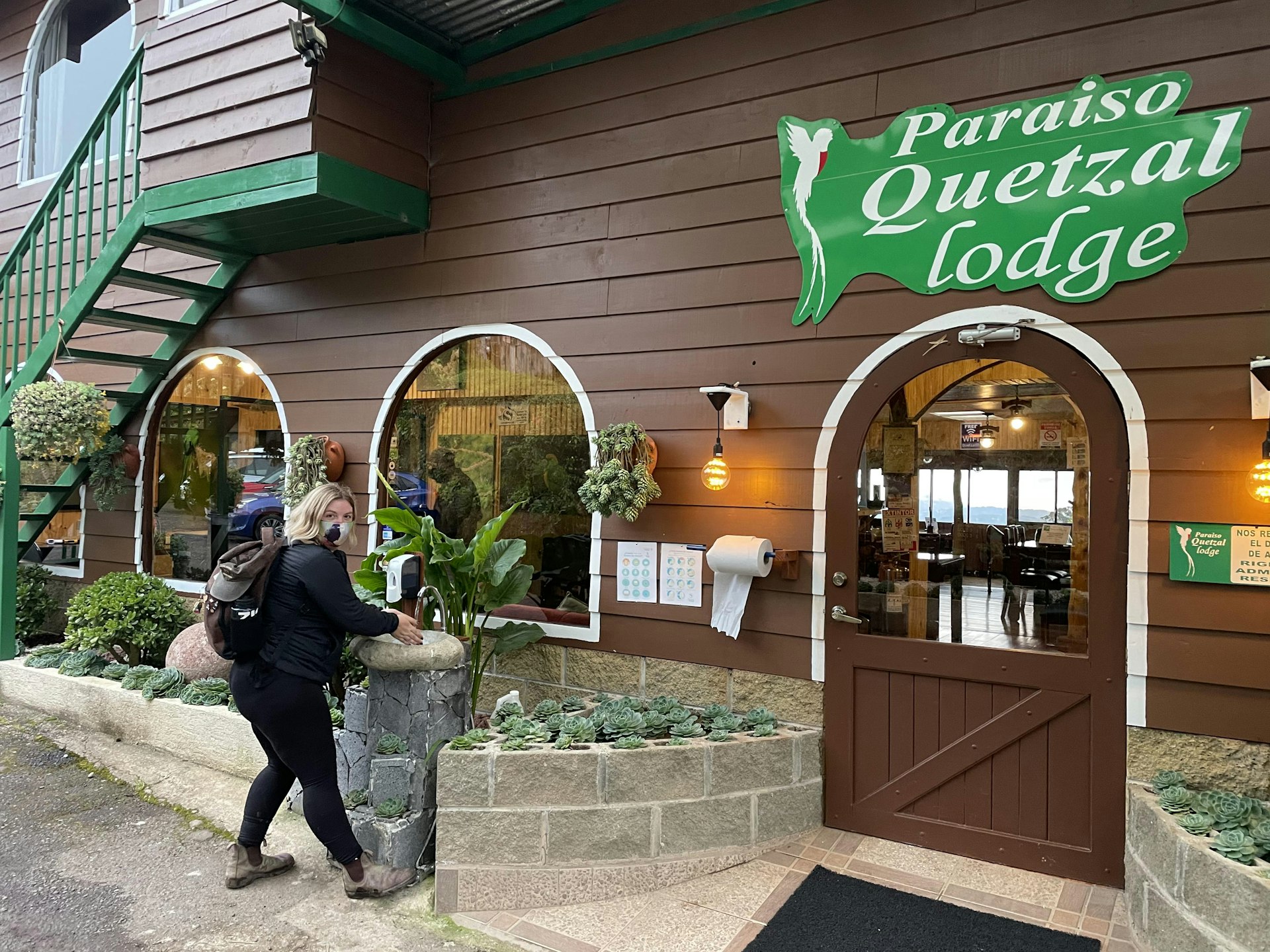
Unintentional hotel takeovers and the quest for the quetzal
Although I would only be staying at boutique birdwatching hotels, it was immediately apparent that I would be the only guest at most of them, and if not, then certainly the only foreigner. My first stop was the Hotel Quelitales, in Cachí. There I had the full attention of the owner (and talented chef), José.
He explained that in 2020 he was hoping to add five bungalows to the property’s existing 10, but could no longer thanks to COVID. And while many smaller hotels like his were experiencing some domestic tourism over the weekends, there was basically no reason to be open during the week.
This sentiment was echoed at my next stops, the warm Hotel Villa Florencia and the elegant Casa Turire in Turrialba, an underrated region that offers just about everything one would visit Costa Rica for (minus beaches). It was between these two accommodations that I began my search for the quetzal – successfully, I might add! After an early wakeup (and temperature check) to drive up Turrialba Volcano, my 25-year search came to its decadent end.

Throughout my lonesome stays at empty hotels I experienced the full range of methods used to safeguard health. At Casa Turire, for example, they sanitized my luggage before it could be brought inside. At Paraiso Quetzal, my temperature was checked any time I went into the building from outside. It was there I also experienced the enforcement of reserving staggered meal times, only because it was the weekend, so domestic travelers were visiting as well.
But no matter where I went, the message I received was the same: please tell your friends and family to come to Costa Rica.
Is it safe to visit Costa Rica?
Throughout the trip I was presented with a level of gatekeeping via health protocols that made me feel secure in my health and the health of those around me. Whether I was on a wildlife safari boat by myself in Sarapiqui or zip lining through the jungle in Turrialba, my temperature was checked beforehand, I was told to wash and sanitize my hands – and observed while I did, my equipment was cleaned in front of me, and I was masked, as was every other person I encountered. I can safely say I don’t know what anyone in Costa Rica looks like.
The only exception to mask-wearing was while whitewater rafting with Serendipity Adventures on the Pacuare River, because the risk of drowning is more imminent when you’ve spilled into Class 5 rapids and there’s a cloth over your mouth.
Once we were on the shore, however, it was masks on for everyone. I’ll admit it was immensely pleasurable to witness the joy these rafting guides felt in seeing each other and getting to be back on their beloved river for the first time in eight months by getting to see them smile.
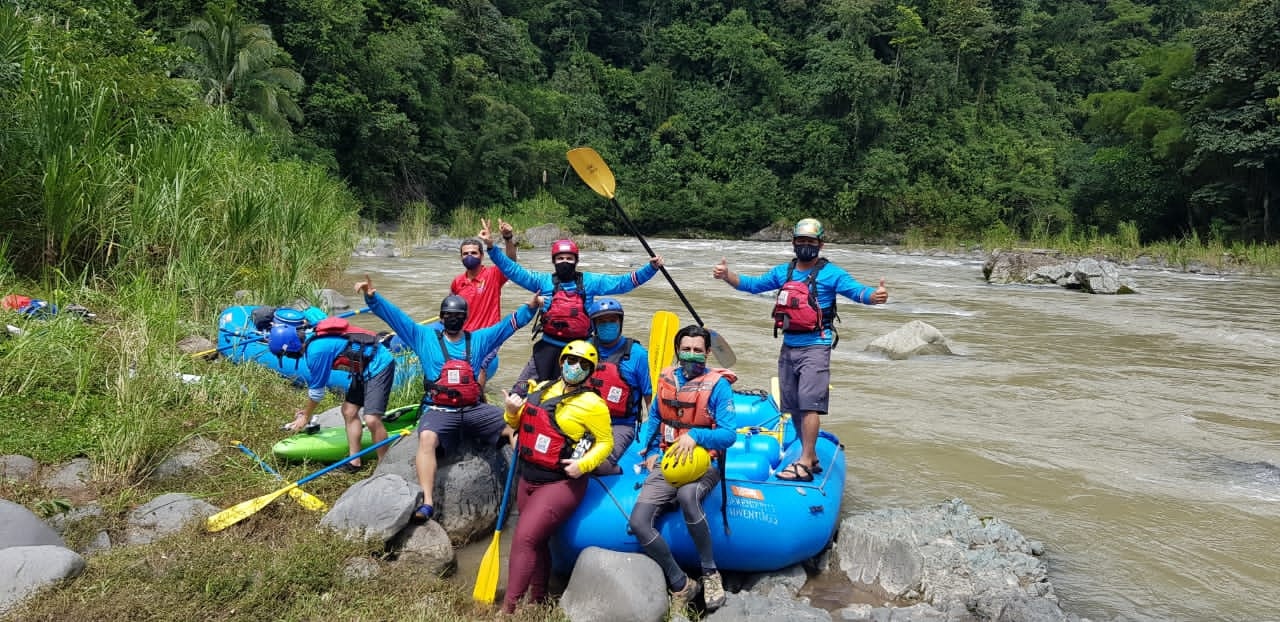
The only time I felt remotely unsafe was when I encountered a group of birdwatching German tourists, the only other travelers I ran into besides a masked American couple also looking for the quetzal. The German group, however, wore no masks and paid no mind to maintaining space from me, a total stranger. I elected to leave rather than risk it.
So after spending 10 days in Costa Rica, it’s clear the biggest risk to my health remains other travelers. Personally, I wish Costa Rica would bring back mandatory testing prior to arrival. This extra level of gatekeeping drives away would-be visitors that falsely consider COVID-19 a hoax while maintaining a higher level of awareness about what’s coming into the country.
But even without testing, Costa Rican tourism stakeholders appeared so invested in enforcing health protocols that it’s difficult to imagine a scenario in which COVID could easily propagate. I asked every person I encountered the same question: do you want Americans to visit? Unequivocally the answer was yes.
How to visit Costa Rica
While testing isn’t mandatory, I strongly urge every traveler to consider getting it done anyway. The pandemic has given us the opportunity to reevaluate our impact on the world, so why not move forward in a way that consciously involves those around us?
With that in mind, there are many airlines now flying to Costa Rica from around the world, with more slated to come shortly. From the US, the country is currently served by American, Alaska, United, Delta, JetBlue, and Spirit Airlines. International airlines include Air Canada, Copa, Avianca, British Airways, Lufthansa, Iberia, and Air France.
There is no curfew and tourists can move freely about the country, though hiring a guide is a great way to navigate Costa Rica (especially if you’re looking for rare birds).
And once you’re there, take advantage of what Costa Rica does best: get deep into the wilderness, away from all the people, and enjoy the incredible wildlife that calls it home.
You might also like:
I went to Cuba after it reopened - here’s what you need to know
Costa Rica’s Playa Hermosa is the next World Surfing Reserve
Costa Rica is asking travelers to offset their carbon footprint
Get more travel inspiration, tips and exclusive offers sent straight to your inbox with our weekly newsletter.
